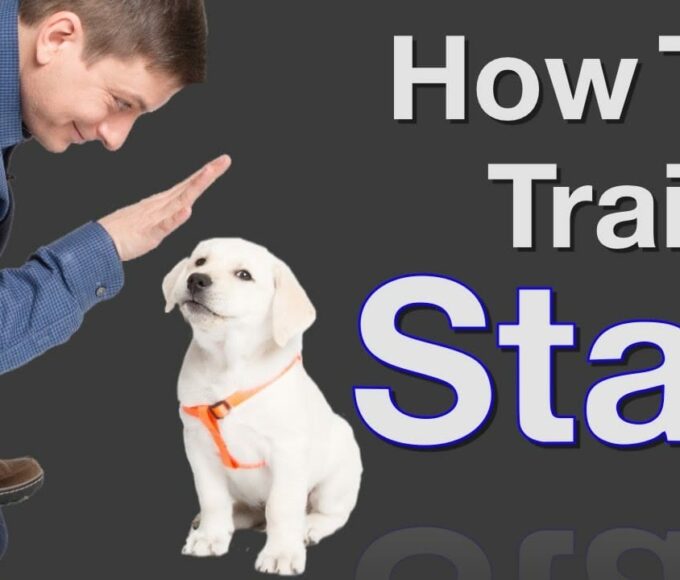The Pinch, prong or choke collar: Are they cruel?
Maybe you’ve seen somebody walking a dog with an odd-looking chain collar. When the dog lunges forward or the owner tugs on the lead, the chain tightens around the dog’s neck.
Maybe you were horrified, or maybe you thought it looked like a good idea.
These chain collars are known as pinch, prong, or choke collars, and are an extremely controversial method of dog training. In this article, we’ll learn more about what a pinch collar is, and how you can use it.
More importantly, we’ll discuss whether you should use it.
What is a Pinch Collar? And How Are They Used?

A pinch, prong, or choke collar is made up of chain links that loop around the dog’s neck.
There are often blunt “prongs” that turn in towards the dog’s skin. When your dog walks nicely to heel, the collar hangs around its neck with a bit of give.
However, if you tug on the lead, the prongs will dig into the dog’s skin.
You may find some different varieties of the choke collar. Some don’t have the prongs and will tighten a little if you tug on the lead. The idea behind all of these collars is to tug at your dog’s lead if they misbehave.
For example, these types of collars are considered useful if your dog is trying to pick up something they shouldn’t from the ground or lunging forward at other dogs or people.
The action hurts the dog as the prongs dig into its skin, and it learns not to do that behavior—not to pull ahead or lunge.
Do Prong Collars Hurt Dogs?

In theory, prong or pinch collars should only offer a small amount of discomfort.
The reality is quite different.
Pinch collars, if used incorrectly, can cause a lot of pain to a dog and do serious damage.
Left unsupervised, pinch-collared dogs can seriously hurt or even kill themselves, and ill-fitting collars can cause a lot of pain.
Pinch collars can even potentially cause serious damage to the trachea and esophagus, as well as lead to ocular damage (damage to the eyes as your dog strains and chokes).
In worst-case scenarios, these collars may even strangle a dog to death.
Imagine this: You’re walking on a narrow street, and your dog suddenly lunges to the side, into the road.
A car is coming, and in a panic, you yank your dog’s lead, pulling them back to safety. That’s an automatic reaction. If your dog is wearing a harness or regular collar, only their feelings will be hurt (and maybe their skin a little bit irritated).
Now imagine that your dog was wearing a pinch collar. Serious damage could be done to your dog, and you’ll also damage their trust in you.
Are Prong Training Collars Cruel?
Another way to word this question: Should you use a prong collar?
Not really. You should never use methods like pinch collars, shock collars, and other painful methods of “training” on your dog.
A pinch collar is only designed to be used on a very narrow selection of dogs. They’re intended for large, very strong dogs with thick, fatty necks. This includes dogs like Rottweilers, Staffordshire bull terriers, Pitbulls, and so on.
It’s worth noting that methods of positive reinforcement work much better than negative reinforcement and cruelty, and pinch collars may not work the way you hope.
Instead of associating the pain and distress of the pinch collar with bad behavior, your dog will associate it with you, or with another dog or person.
This can make the behavior worse and create a vicious cycle, as well as maybe even lead to training difficulties.
If you have a small dog, a medium dog, or any dog without a thick, strong neck, you should not use a pinch collar.
Using pinch collars on small dogs can lead to their delicate tracheas being crushed, which quickly leads to death. Even large dogs with necks strong enough for a pinch collar can be seriously hurt by inexperienced owners.
In short, it’s best to avoid pinch collars altogether, unless recommended by a vet or a professional dog behaviorist.
What Can I Use Instead of a Pinch Collar?
If your dog behaves badly when you’re out and about, don’t worry. There are plenty of safe ways to restrain and train your dog that don’t carry the risk of serious injury and death, such as:
- Head collars
- No-pull harnesses
- Basket muzzles
- “Hands-Free” harnesses (these usually clip onto your belt, leaving your hands free to dispense treats and toys)
- Consulting with an animal behaviorist or dog trainer

If your dog is out of control, don’t immediately start using pain and fear as a training method. Seek professional help, or consult a vet.
In other good news, there are plenty of cruelty-free ways to train your dog!
It’s a much better option to seek these training tactics and strategies out rather than resorting to pinch collars or choke collars right off the bat. In fact, these should often be a last resort.
At the end of the day, you want you and your furry friend to get along peacefully. Choke collars don’t necessarily give way to this scenario.
Thus, if you’re considering this type of method, tread lightly! Again, don’t use them unless it’s recommended to you for a specific reason.






